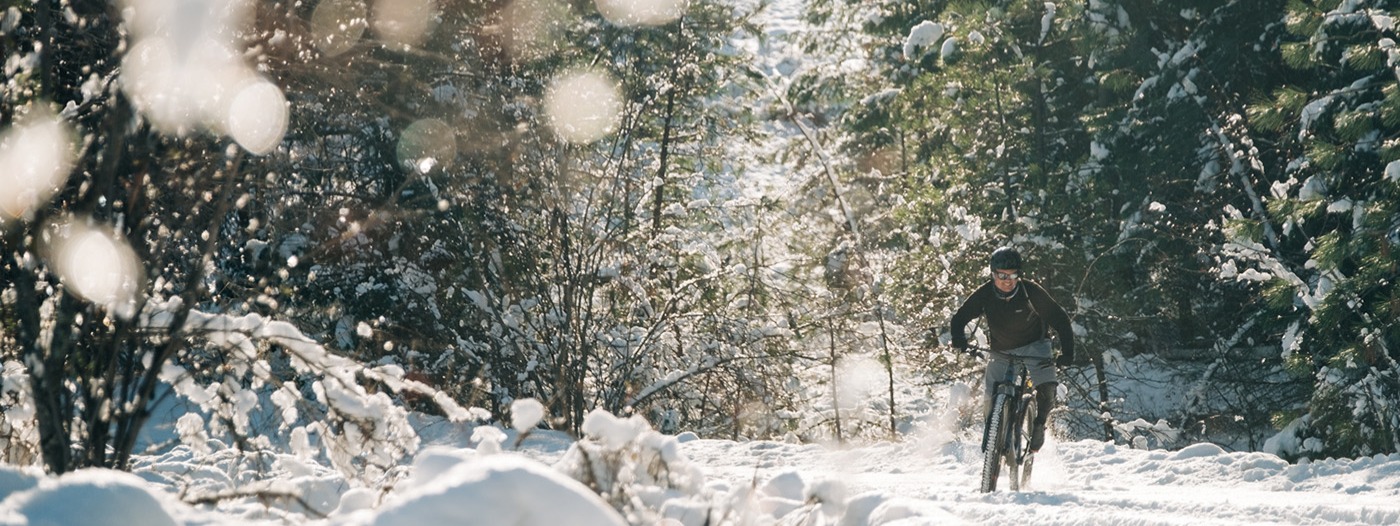
Cold Weather Tips
This time of year, it’s easy to want to put the bike in hibernation until springtime. But the payoffs to biking through the winter are enormous. Come spring, your conditioning will be miles ahead of your couch-dwelling cycling buddies. But more immediately, you’ll get all the health benefits of biking while outpacing the winter blues. (And you can indulge that much more at the holidays.)
Make no mistake, it’s harder to get out the door for a ride this time of year when even the walk to the garage is cold, damp and dark. Make it easy by having a dialed-in winter setup so there are fewer hurdles to getting out the door. And if you’re new to winter riding, start slow and short. This is unlikely to be the season of Strava PRs. But even a short spin through the neighborhood is better than nothing.
And remember: in the winter, every ride is an adventure. Check out our winter riding tips below to make sure it’s an enjoyable and safe one.
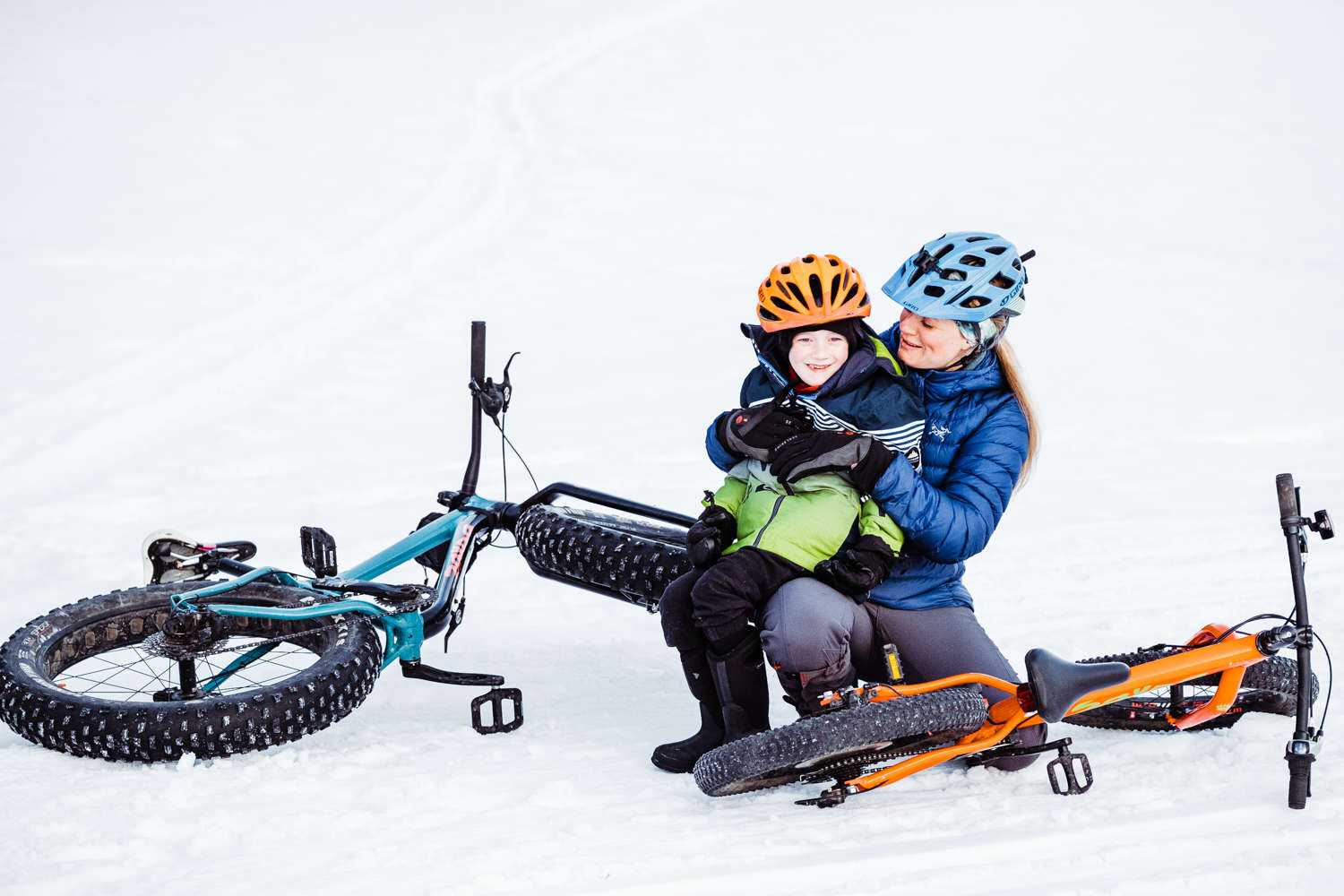
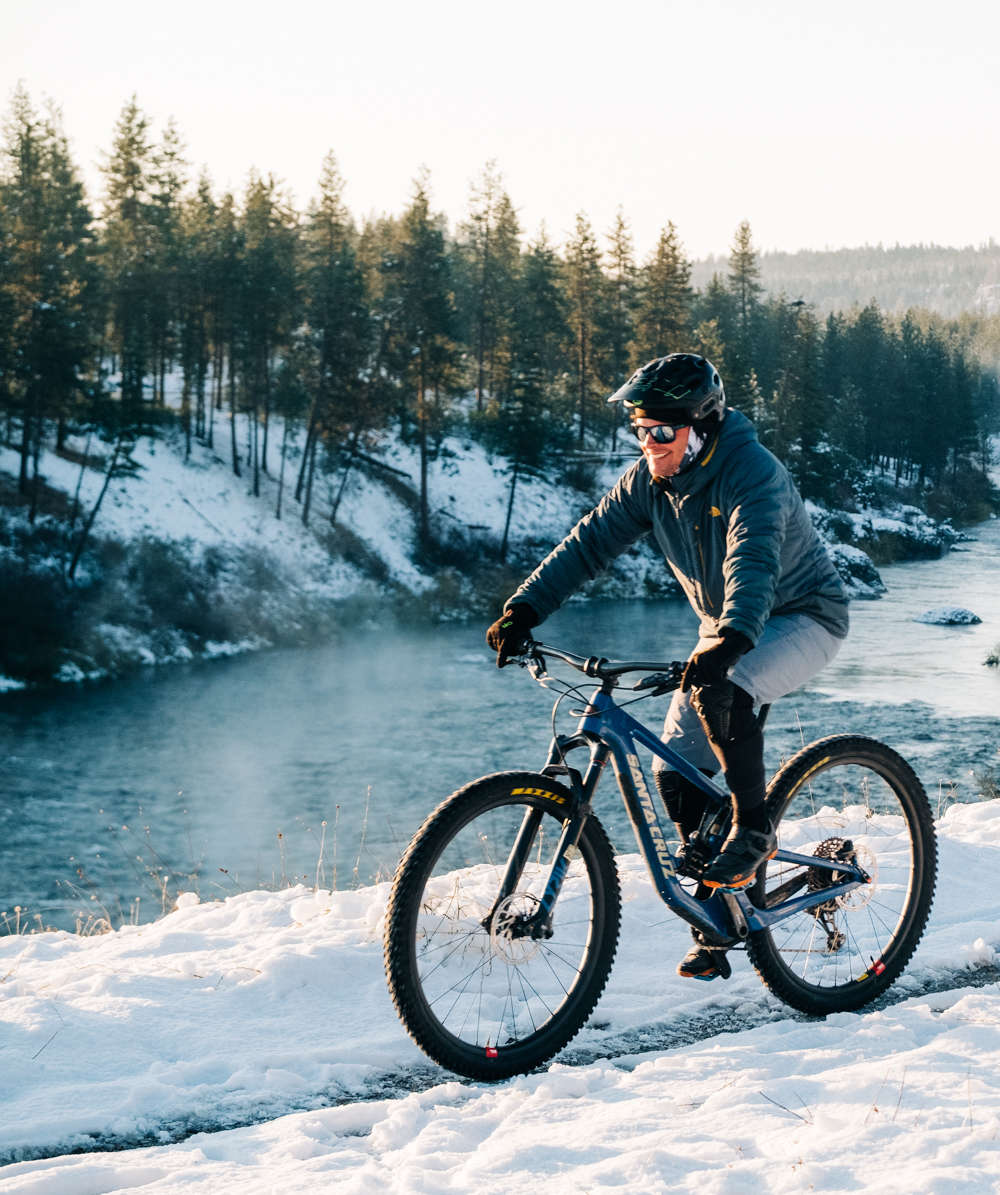
Bikes
Between the increased exposure to bike-eating elements and the usually more casual nature of winter riding, the “off” season is a great time to simplify your bike. Think of your winter rig as the bicycle equivalent to rock skis. Some riders opt for a dedicated winter rig, while others choose to go all-in on a fat bike. (We carry a great selection from Salsa and Otso.)
Whatever you choose, keep the following in mind:
Cold weather can affect suspension performance, so you may need to adjust your settings accordingly and more often. Or consider a hardtail or even a fully rigid ride.
E-bike batteries can drain more quickly in cold temperatures, so minimize the amount of non-riding time the bike spends outdoors. Better yet, bring the battery inside to a heated room when not in use.
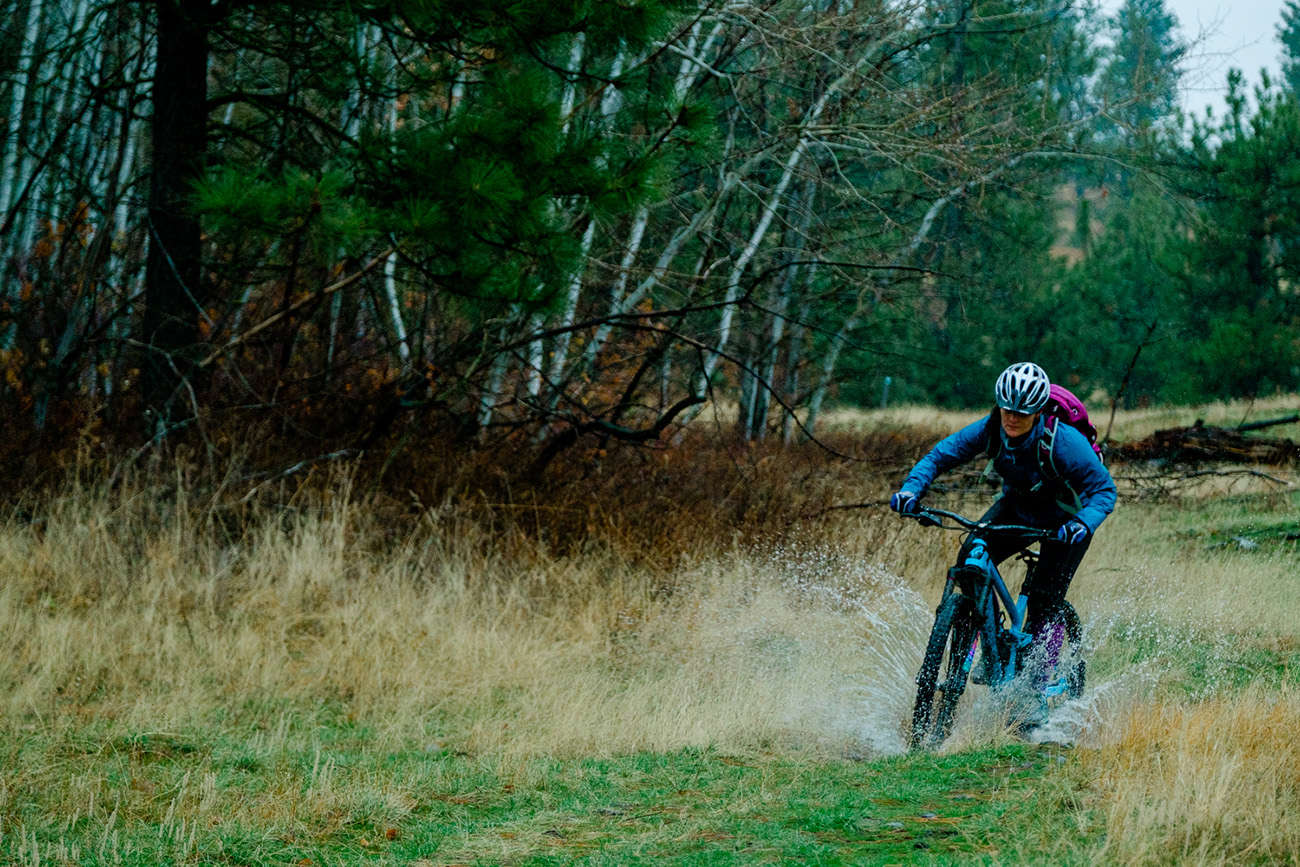

Layering
The principles of cold-weather clothing that govern all outdoor activities apply to cycling, with the added consideration that you may be frequently alternating between short, sweat-generating climbs and fast, chill-inducing descents. That means layering is even more important. And remember: cotton kills; choose wool or wicking synthetics that provide insulation even when wet.
A few more layering tips:
As hard as it might be to remove that puffy at the beginning of a ride, It’s better to start cool and add a layer than sweat out your gear.
The generally higher speeds of road biking may require extra insulation to cut down on rider-generated wind chill.
Hands and feet bleed heat easily; wind- and waterproof gloves and overshoes will provide insulation where it’s needed most.
Clear or lightly tinted glasses will keep any mud and debris that slip by your mudguard (see below) out of your eyes.
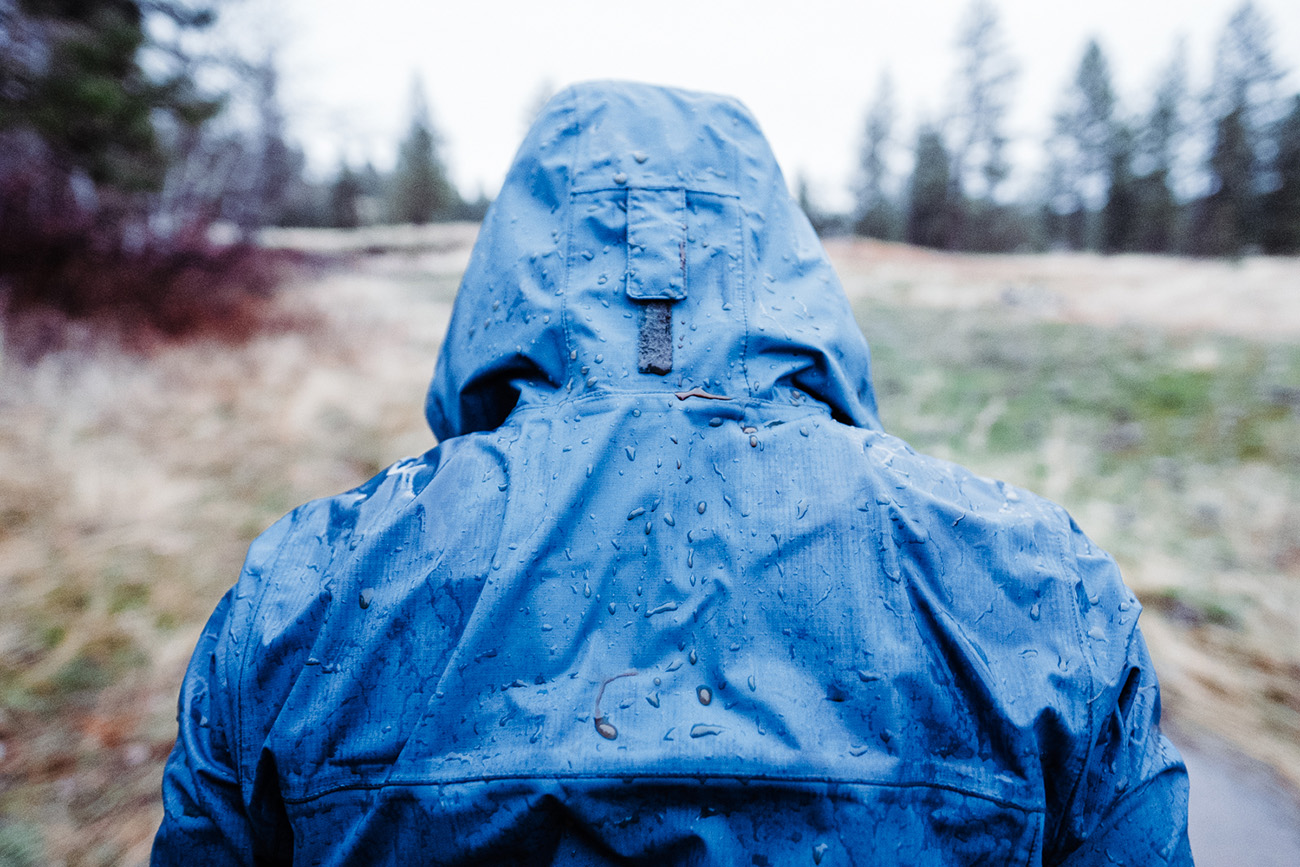
Lights
Bike lights have come a long way from the bulky battery hogs of twenty years ago. Today’s lightweight, bright, USB-rechargeable LED lights make night riding easier and safer than ever. Your preferences may vary, but a good starting point is 1000 lumens; while many riders make do with smaller lights, a slightly higher wattage but powered down will save battery life. Many riders wear a helmet-mounted light at a lower power too; they are particularly useful on singletrack, where your bike and body may be pointed different directions—on sweeping switchbacks, for example. Whatever the power number, the important thing is that it’s a light you can easily pack; a light does no good when you don’t have it with you.
On the road, a flashing rear light—ideally one each on your bike and body—will alert drivers to your presence.

Mudguards
This one’s a no-brainer: It’ll take only one ride of blinking grit out of your eyes to see the light. Generally, a front mudguard is sufficient for mountain biking, while commuters and road riders might prefer front and rear coverage to avoid the dreaded wet streak up their backs.
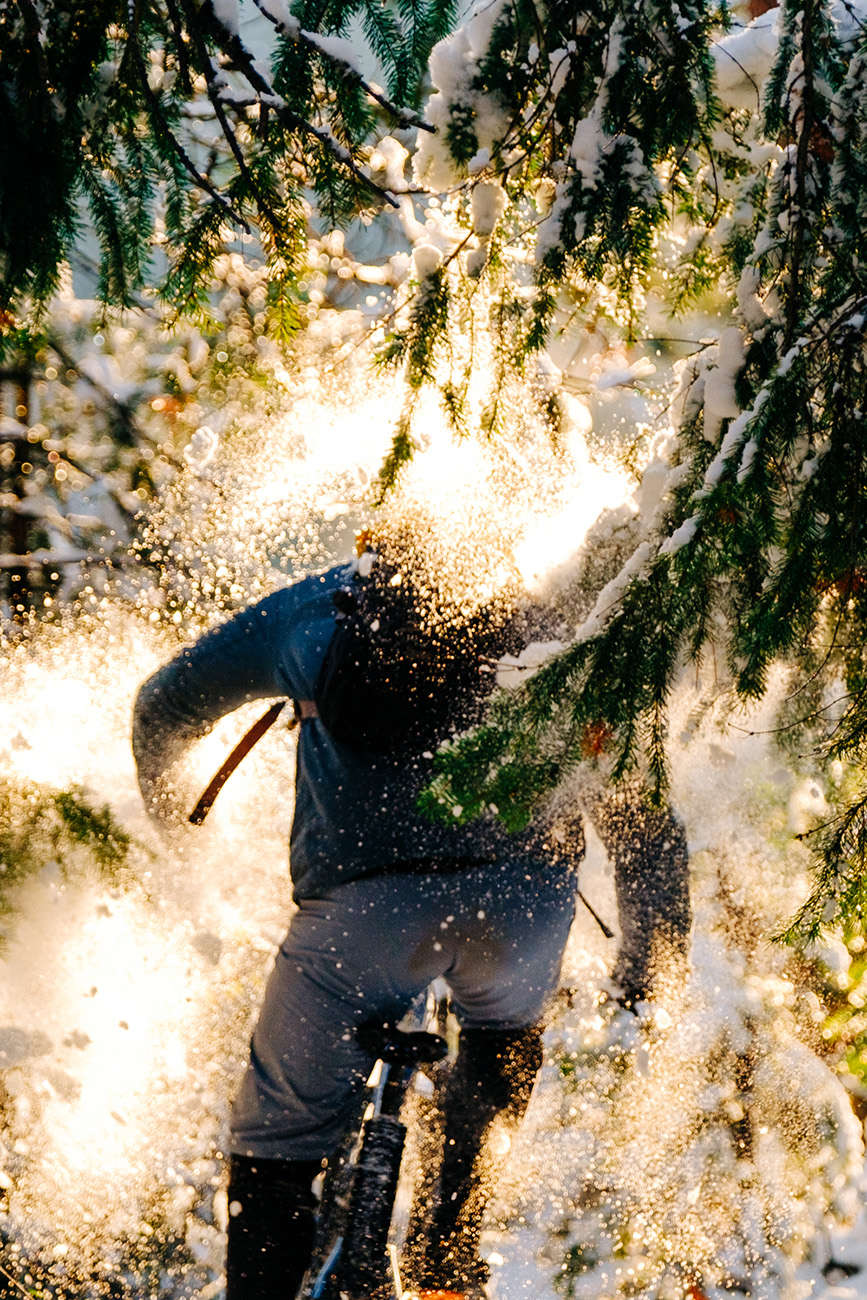
Maintenance
Make sure your bike stays as protected from the elements as you are. Even more than during dry season, a regular cleaning and maintenance regimen is important; the last place you want to have a mechanical is in the dark or snow. Rain and mud are the usual winter cleaning culprits, but road salts can wreak havoc on your drivetrain, and even ice and snow can make short work of your lube.


